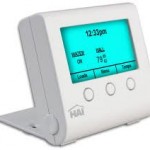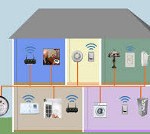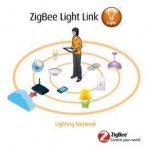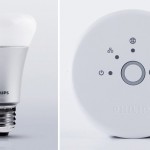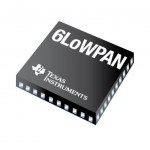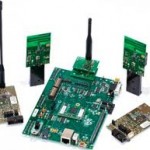The success or failure of new Internet-of-Things products is predicated on many factors, one of those being autonomy for portable devices – that is, how long the battery will last between charges. The less power your devices uses, the more attractive it will be to the end user and customer. And to help with this goal in mind, a new standard has emerged.
The International Electrotechnical Commission has recently ratified the new ISO/IEC 14543-3-10 standard, specifying a Wireless Short-Packet (WSP) protocol optimised for ultra-low-power and energy-harvesting nodes in wireless sensor networks.
It is the first and only existing standard for wireless applications that is also optimised for energy harvesting solutions, aimed at energy-harvesting wireless sensors and wireless sensor networks with ultra-low power consumption.
Devices in low-power wireless sensor networks and Internet-of-Things applications that utilise energy harvesting technology can draw energy from their surroundings – for example from vibration, light or heat sources. Energy harvesting enables the use of electronic control and automation systems that work independently of an external power supply, without maintenance and without ongoing energy costs for the nodes in the sensor network.
In some environments where harvesting of small amounts of energy from ambient sources is practical, this technology offers energy savings and fast and easy installation, without the need for power cables for example, along with reductions in ongoing maintenance requirements for battery-powered devices.
International standardisation will accelerate the development and implementation of energy-optimised wireless sensors and wireless sensor networks, with the potential to also open up new markets and areas of application for wireless sensor and IoT solutions. In addition to the existing established markets for home and building automation and energy efficiency technology, further application sectors such as the “smart home”, “smart grid” and solutions in industry, logistics and transport are likely to continue to emerge into the future, with a strong foundation of interoperability, standardisation and openness provided by this novel but field-proven standard.
However, this new IEC standard specifies the architecture and lower layer protocols – the physical layer, data link and networking layer. The higher layers in the OSI network model are not specified in this standard and other standards, either open standards or vendor-specific proprietary protocols, will be used to implement the higher layers of the network.
EnOcean, which develops energy harvesting wireless technology, is a pioneer in this field, and the company has been producing and marketing maintenance-free wireless sensor solutions for use in building and industrial automation for more than ten years, with EnOcean-based products currently installed in over 250,000 buildings around the world.
EnOcean’s wireless technology is already a firmly established technology for smart buildings, energy efficiency and automation applications. The EnOcean Alliance, a cooperative industry alliance established by EnOcean, sees the ratification of this new IEC standard as one of the key prerequisites for expanding the already highly successful, fast-growing ecosystem of EnOcean-enabled products and RF communication modules from EnOcean and other vendors.
Members of the EnOcean Alliance have already introduced more than 1200 interoperable EnOcean-based products, all of which comply with the new standard. Developers and manufacturers can therefore benefit from the EnOcean Alliance’s extensive practical experience, huge product range and installed base of products deployed by customers in the field along with many years of user education and familiarisation.
The EnOcean Alliance draws up the specifications of standardised applications and device profiles based on the IEC standard, with these “EnOcean Equipment Profiles” ensuring the interoperability of products from different vendors. These standardised profiles are optimised for ultra-low energy consumption, making them a useful, tried and tested complement to the new IEC wireless sensor networking standard and allowing smart, energy-efficient automation solutions to easily be realised that are non-proprietary and industry-neutral.
EnOcean’s technology pushes wireless sensor network technology and energy efficiency to the limits, with EnOcean’s range of self-powered wireless switches, sensors, controls and other modules combining small-scale energy-harvesting power supplies with ultra-low-power electronics and reliable wireless communications.
This enables developers to create self-powered wireless sensor solutions that are valuable for efficiently managing building, smart energy management and industrial applications. Together with the EnOcean Equipment Profiles drawn up by the EnOcean Alliance, this international standard lays the foundation for fully interoperable, open, self-powered wireless technology with a level of industry-wide standardisation comparable to today’s widely accepted protocols such as Bluetooth and Wi-Fi.
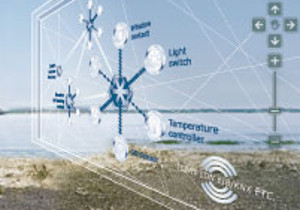
EnOcean’s technology allows fast development and marketing of new wireless solutions in building services, industry and other sectors, and standardised sensor profiles provide for interoperability of the resulting products. Devices from different manufacturers can then communicate and cooperate with other devices on the network.
Interoperability of different end-products based on EnOcean technology is an important success factor for the establishment of self-powered IoT and WSN technology in the market, and this is the reason the EnOcean Alliance pursues standardisation of communication profiles, ensuring that sensors from one manufacturer can communicate with receiver gateways of another, for example.
Software provided by the EnOcean Alliance also allows modular and versatile, user-friendly integration of these systems into end-user applications. End users thus have the entire product portfolio enabled by EnOcean and EnOcean’s self-powered energy-harvesting wireless sensor network technology at their disposal.
This allows vendors to focus on their product branding, services, support and installation, along with providing Internet services, mobile apps and other software products whilst using existing hardware and core technology – along with developing and offering hardware products to support their own specialised market niche, going beyond the existing portfolio of EnOcean-enabled products if this is desired.
And as a leading developer of IoT-enabled products, our team at the LX Group is ready to work together as your design partner to help reduce the power consumption of your new or existing product with the EnOcean standard or other options we can introduce.
To get started, join us for an obligation-free and confidential discussion about your ideas and how we can help bring them to life – click here to contact us, or telephone 1800 810 124.
LX is an award-winning electronics design company based in Sydney, Australia. LX services include full turnkey design, electronics, hardware, software and firmware design. LX specialises in embedded systems and wireless technologies design.
Published by LX Pty Ltd for itself and the LX Group of companies, including LX Design House, LX Solutions and LX Consulting, LX Innovations.

